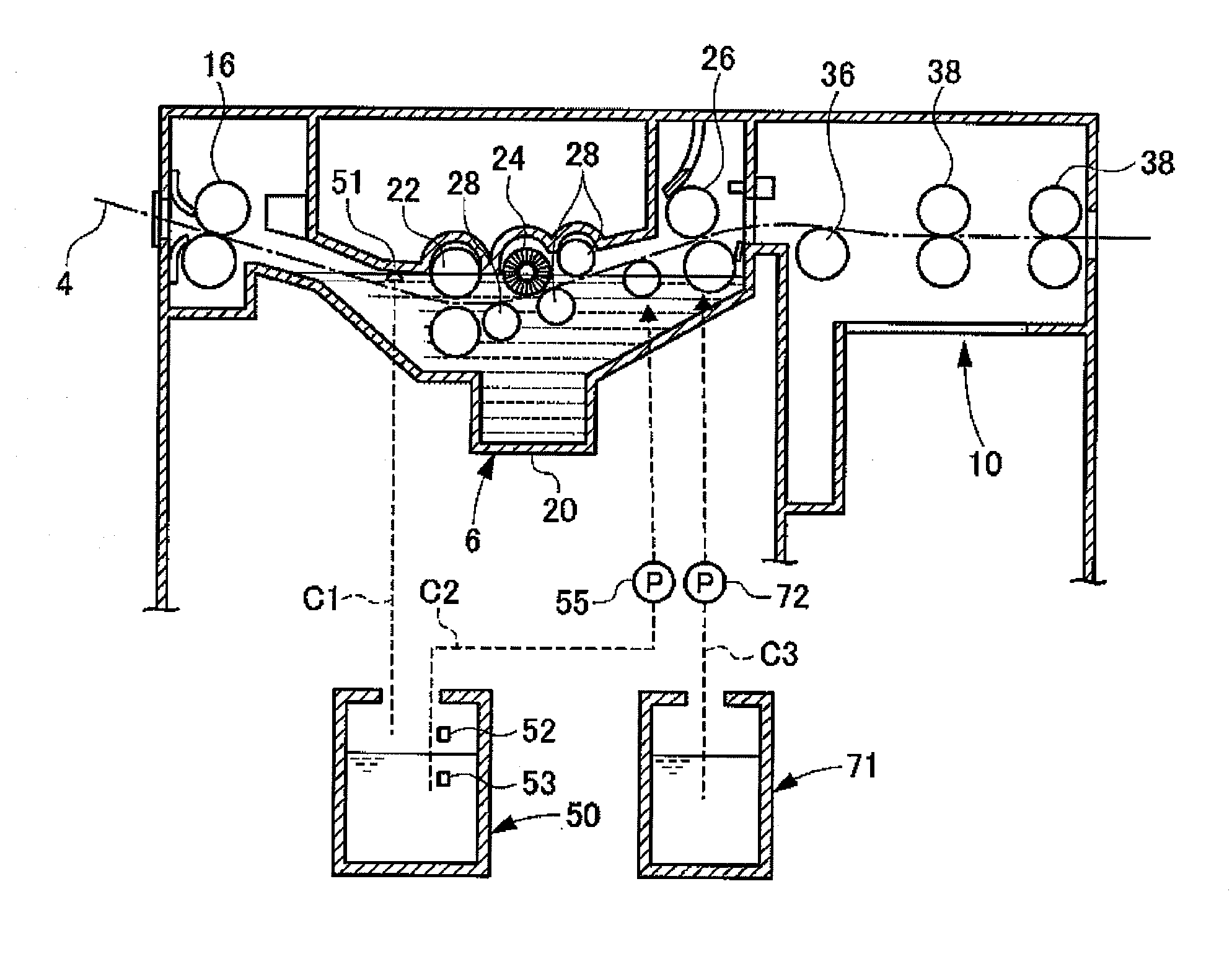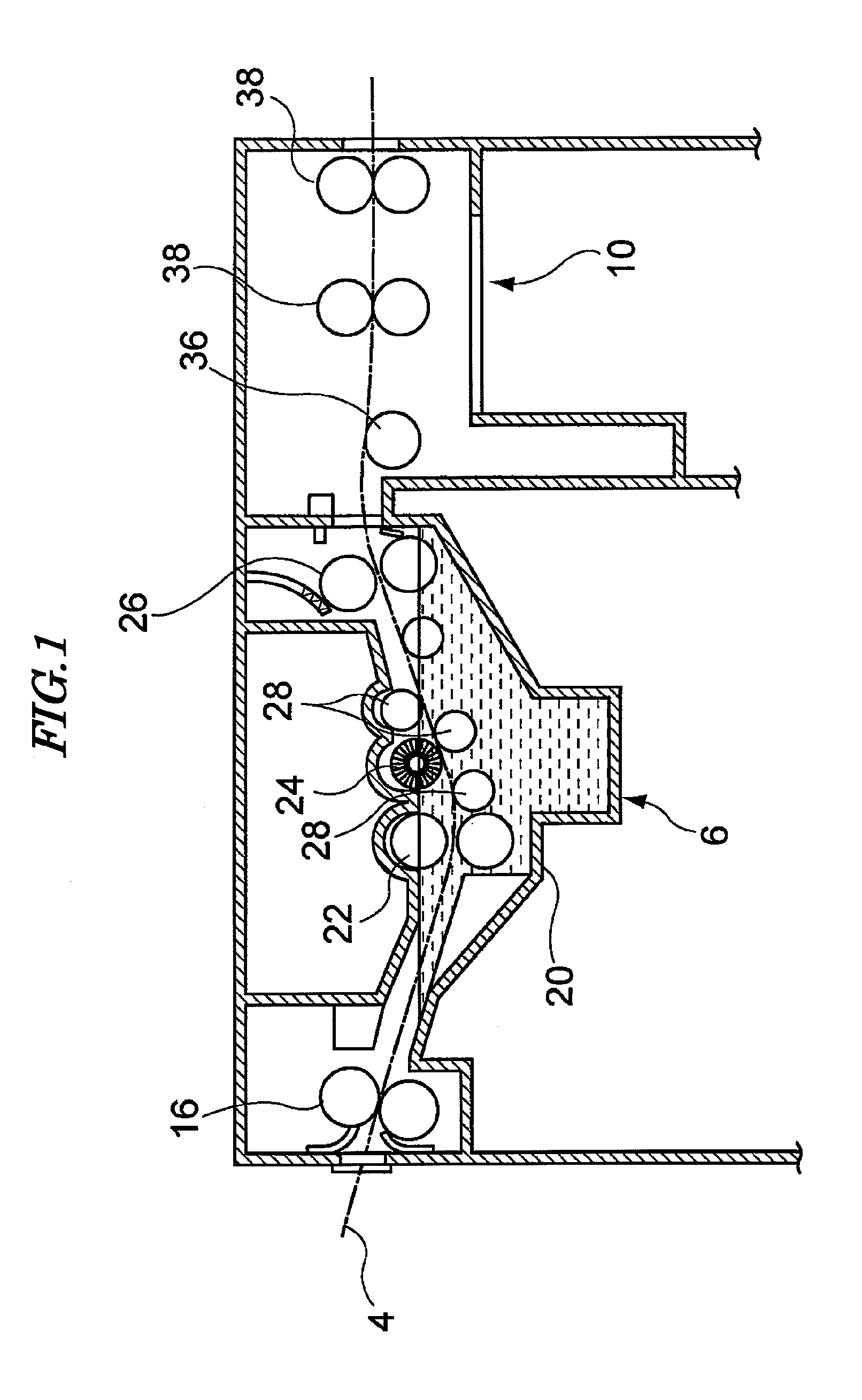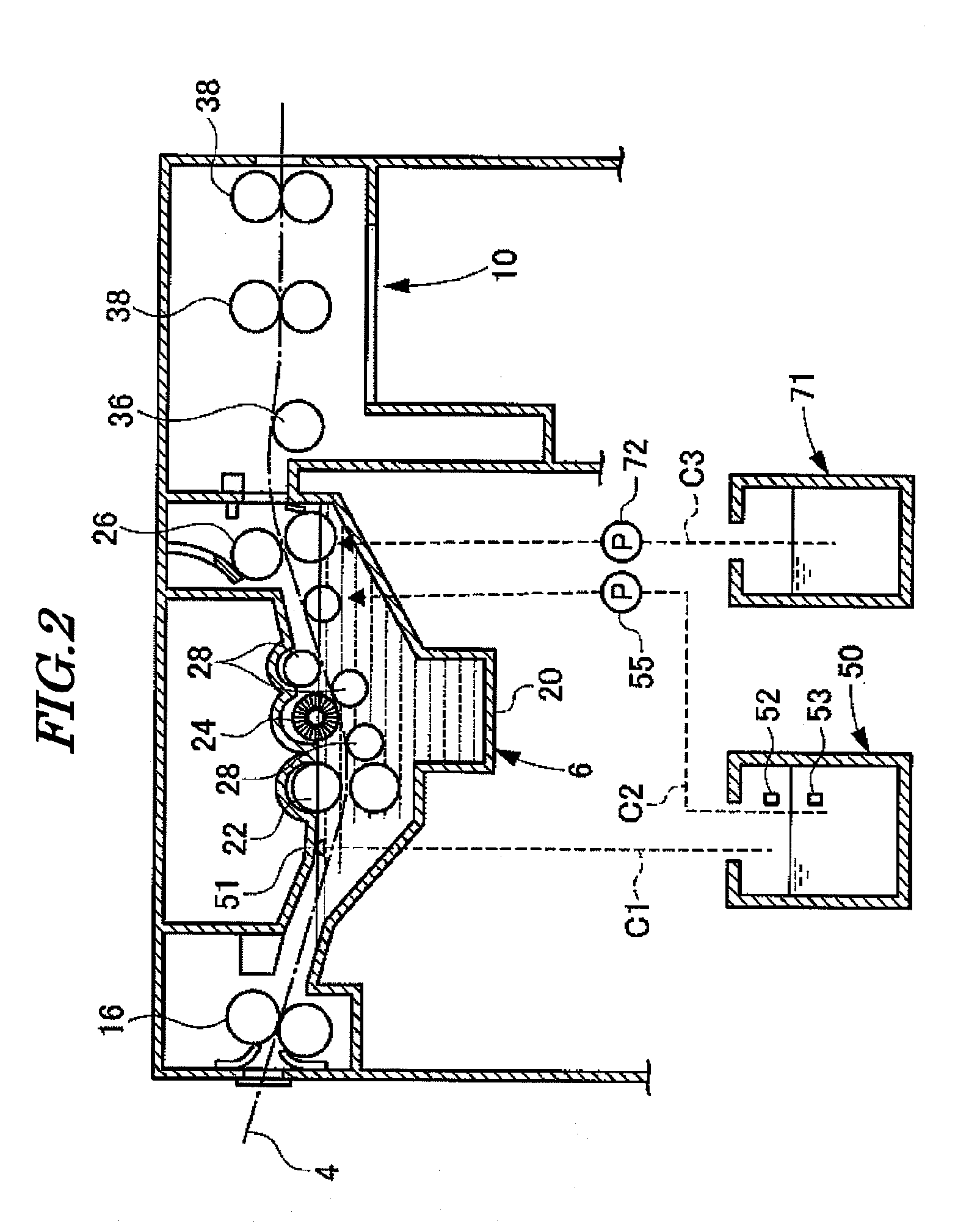Process for making lithographic printing plate, developer for lithographic printing plate precursor, and replenisher for lithographic printing plate precursor development
a technology of lithographic printing plate and precursor, which is applied in the field of making lithographic printing plate, can solve the problems of easy formation of derived residues, degradation of developability, and degradation of laydown or printing durability, and achieve excellent processing capability, good printing capability, and excellent developability
- Summary
- Abstract
- Description
- Claims
- Application Information
AI Technical Summary
Benefits of technology
Problems solved by technology
Method used
Image
Examples
examples
[0369]The present invention is explained below in detail by way of Examples, but the present invention should not be construed as being limited thereto.
[0370]Binder polymers B-1 to B-6, ethylenically unsaturated compounds M-1 to M-5, M-7, and M-8, polymerization initiators I-1 to I-3, sensitizing dyes D-1 to D-5, chain transfer agents S-1 to S-3, additive T-1, fluorine-based surfactant (F-1), and ethyl violet (EV-1) used in the Examples are shown below.
examples 1-1 to 1-34
and Comparative Examples 1-1 to 1-6
Preparation of Support
[0371]A 0.03 mm thick aluminum plate (JIS A1050) was subjected to the surface treatment below.
(a) Mechanical Roughening Treatment
[0372]The surface of the aluminum plate was subjected to a mechanical roughening treatment by means of a rotating roll-shaped nylon brush while supplying a suspension of an abrasive (pumice) having a specific gravity of 1.12 in water as an abrasive slurry to the surface of the aluminum plate. The abrasive had an average particle size of 30 μm and a maximum particle size of 100 μm. The material of the nylon brush was nylon 6,10, the bristle length was 45 mm, and the diameter of the bristles was 0.3 mm. The nylon brush was formed by making holes in a stainless steel tube having a diameter of 300 mm and densely implanting the bristles. Three rotating brushes were used. The distance of two support rollers (φ 200 mm) below the brush was 300 mm. The brush rollers were pressed against the aluminum plate so ...
examples 1-35 to 1-60
and Comparative Examples 1-7 to 1-10
Preparation of Support
[0413]Support 2 was prepared by the same method as in Example 1-1.
Formation of Photosensitive Layer
[0414]Photosensitive layer coating solutions 8 to 10 below were prepared and applied onto the supports 2 formed as above by means of a wire bar. Drying was carried out using a hot air dryer at 100° C. for 60 sec. The dry coat weight was 1.4 g / m2. Subsequently, the same protective layer coating solution 1 as for the lithographic printing plate precursor 1 was applied using a bar at a dry coat weight of 1.25 g / m2, and then dried at 125° C. for 70 sec. to thus form a protective layer, thereby giving lithographic printing plate precursors 8 to 10.
Photosensitive Layer Coating Solution 8
[0415]Binder polymer (B-4): 0.25 parts by weight
Binder polymer (B-3): 0.20 parts by weight
Binder polymer (B-6): 0.15 parts by weight
Ethylenically unsaturated compound (M-5): 0.50 parts by weight
Radical polymerization initiator (I-2): 0.07 parts by weig...
PUM
| Property | Measurement | Unit |
|---|---|---|
| Temperature | aaaaa | aaaaa |
| Temperature | aaaaa | aaaaa |
| Temperature | aaaaa | aaaaa |
Abstract
Description
Claims
Application Information
 Login to View More
Login to View More - Generate Ideas
- Intellectual Property
- Life Sciences
- Materials
- Tech Scout
- Unparalleled Data Quality
- Higher Quality Content
- 60% Fewer Hallucinations
Browse by: Latest US Patents, China's latest patents, Technical Efficacy Thesaurus, Application Domain, Technology Topic, Popular Technical Reports.
© 2025 PatSnap. All rights reserved.Legal|Privacy policy|Modern Slavery Act Transparency Statement|Sitemap|About US| Contact US: help@patsnap.com



